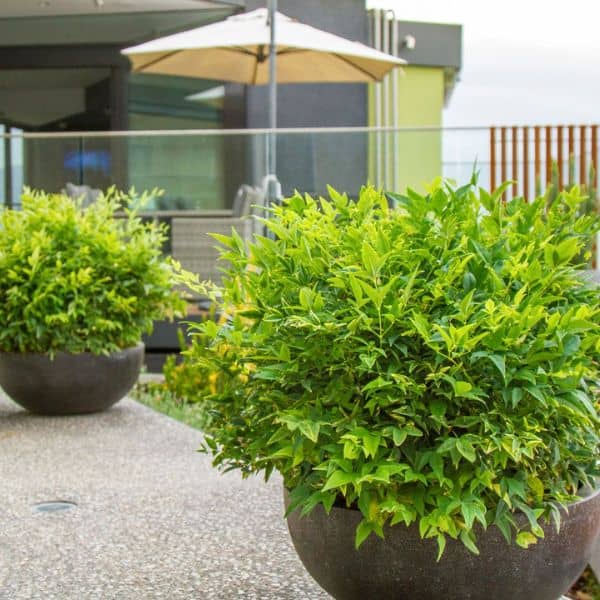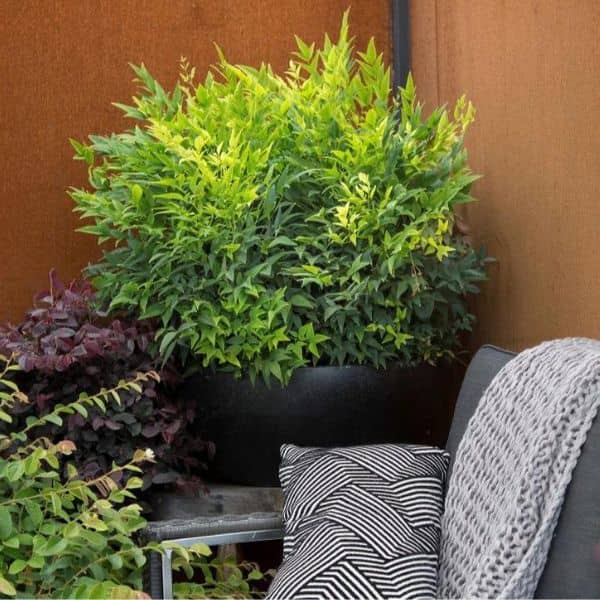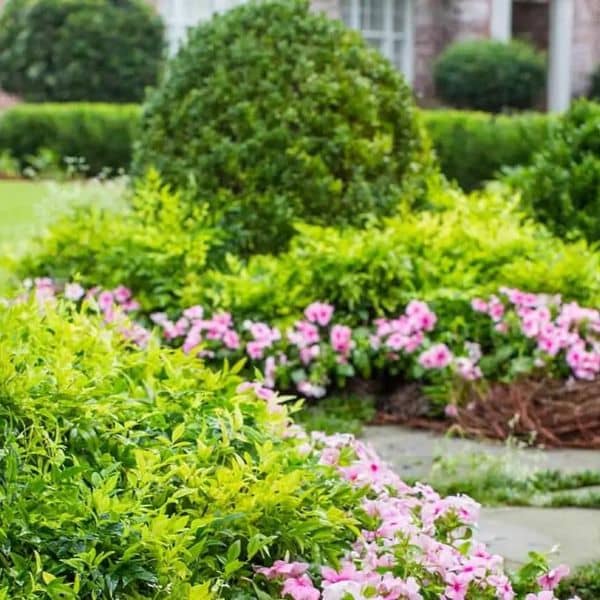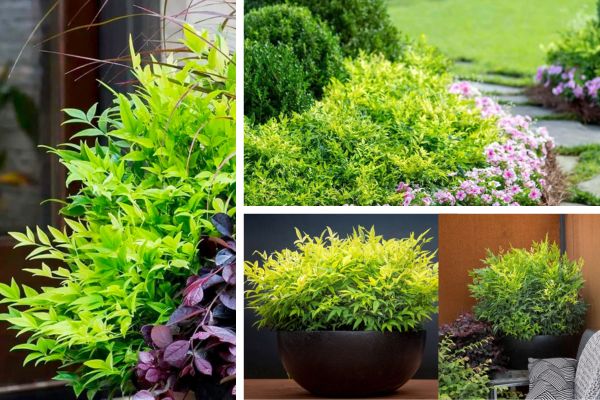Are you searching for a perfect low-maintenance, vibrant plan to brighten up the look of your garden? Look no further, Lemon Lime Nandine is the one for you!
The Nandina Lemon Lime is known for its unique green to vivid green leaves, and compact growth habit, which requires low maintenance and gives a year-round attraction. Here, you will find all the necessary information to know when growing and maintaining this beautiful plant.
Lemon Lime Nandina
The term “Lemon Lime Nandina” refers to a specific type of Nandina domestic, also known as “heavenly bamboo“. Lemon Lime Nandina is a compact growing Nandina that only gets three to four feet in height, and three feet in width, it can actually be kept smaller than that. The main attraction of this plant is it has lime green new foliage on it throughout the growing season and it will brighten any space you put it in this is an unbelievable foundation plant. Since these plants are sterile types, they are not invasive.
Lemon Lime requires minimal caring and gives a year-round beauty, this makes it a popular shrub in landscaping, among the gardeners. This plant is usually used as a bright addition in mixed borders or pots, it grows well in well-drained soil, with full to partial shade.
- Common Name: Lemon Lime Nandina
- Botanical Name: Nandina Domestica
- Family: Berberidaceae
- Plant Type: Evergreen Shrub
- Height: 3 to 4 feet (90 to 120 centimeters)
- Sun Exposure: Full Sun to Partial Shade
- Toxicity: Toxic to pets/animals

Growing Conditions for Lemon Lime Nandina
To maintain the good health of Lemon Lime Nandina, it is important to understand the best growth conditions:
-
Light
Lemon Lime Nandina loves full sun to partial shade, it can tolerate some shade mainly during the hottest part of the day. It thrives in areas that get enough sunshine, whereas they can also grow in less light than that but they tend to be thinner.
-
Soil
Proper soil is an important part when planting any plant, the same goes with Lemon Lime Nandina, it requires well-drained soil whether it is planted in a container or a garden. For the best growth of this plant, well-drained soil is needed, to enhance drainage add sand, perlite, or composted material. They do best in soil that is neutral to slightly acidic with a pH between 5.0 and 7.5.
-
Water
In the case of watering, Lemon-lime tolerates some dryness, but it requires regular watering during its first growing season in order to develop a deep broad root system. Mainly, during the hot and dry season, give them proper watering to maintain the soil evenly moist, but not soggy.
Avoid overwatering as it can lead to root rot and other problems. Watering your plant less is necessary, if you notice the growth of your plant has been slower throughout the winter.
Planting and Spacing: Lemon Line Nandina
It is essential to consider spacing while planting Lemon Lime Nandina to ensure enough space for the proper growth and air circulation of the plant. Below are some of the basic criteria to follow while planting your Lemon Lime Nandina:
- Whether you are plating it in a garden, container, or pot, make a hole that is twice as big as the plant’s root, but not too deep. Doing this lets the roots of your plant develop freely and establish themselves in the soil.
- As Lemon Lime grows to the height of normally 3-4 feet, you should plant them with a space between around 2-3 feet apart for proper air circulation. Good spacing between the plants will allow them to grow thicker, and more beautiful.
- How to plant? Plant the Lemon Lime in the center of the hole that you’ve made, keep the root at the same depth as it was in the nursery pot, and backfill the hole with the soil. Gently tap down the soil to remove any air space.
- After you’ve planted the lemon-lime, make sure to give it enough water to keep the roots moist, and to enhance the growth of the plant.

Care and Maintenance
Pruning
How and when to prune your Lemon-Lime Nandina? You can prune Lemon lime throughout the year, but late winter or early spring is the best time you can prune your plant as it will promote new growth and help keep the plant in its natural shape.
First, determine the dead, or damaged branches, and trim them out. If you want a more consistent look of your plant, then prune any branches that are too long or messy.
You should avoid heavy pruning as it can stress the plant leading to lower strength or slow growth.
Fertilization
Lemon Lime Nandina does not require much fertilizer, mainly if it is grown in soil rich in nutrients. However, for better growth, apply a slow-release fertilizer that is balanced early in the spring, on the other hand, avoid overfertilization as it results in droopy growth of the plant.
Enhance the Look of your Garden/Landscapes with Lemon Lime Nandina

The bright and beautiful foilage of the Lemon Lime Nandina adds versatility to any landscape or garden, here we discuss a few gardening ideas for it:
- This plant is perfect for foundation planting around your home or surroundings as it has a small size and evergreen nature.
- You can also grow other perennials and shrubs along with Lime Lemon Nandina for a striking contrast in both appearence and colors.
- Furthermore, Nandina can be an excellent choice for balconies and rooftops as it can be easily grown in containers or pots.
Lemon Lime Nandina Companion Plants
Have you ever thought of pairing your Lemon Lime with other plants to enhance your garden or landscapes? Then, consider combining your Lemon Lime Nandina with the following companion plants to further enhance its beauty:
1. Ornamental Plants: Other beautiful plants to add to your landscape are ornamental plants like Blue Fescue, Japanese forest Grass, Pennisetum, and many more
2. Evergreen Shrubs: The colorful leaves of the Lemon Lime Nandina contrast well with the evergreen bushes like Boxwood, Holly, Juniper, and many more, which provide your garden with an evergreen look.
3. Flowering Perennial: Moreover, the lime green leaves of nandina are enhanced by the seasonal color provided by daylilies, coneflowers, and salvia, by planting blooming perennials around your lemon-lime nandina.
FAQs
1. Does lemon lime nandina have berries?
Lemon Lime Nandina is known for its vivid lime green foliage that turns a deep green as it develops and does not produce berries, unlike some other varieties of Nandina domestica.
2. How fast does lemon lime nandina grow?
This plant grows at a medium rate, reaching a height of 12 to 24 inches, a year on average, however, it also depends on various factors like the quality of the soil, watering conditions, lighting, and overall care.
3. Is lemon-lime nandina evergreen?
Yes, Lemon Lime Nandina is an evergreen plant i.e. it keeps its leaves for the entire year providing your landscape’s year-round color and attractiveness.
4. Is lemon-lime nandina poisonous?
Yes, Lemon Lime Nandina is considered poisonous as the berries, leaves, and the stem of the plant contain chemicals that might be harmful to the animals, or the pets when consumed.
Read more on, Anise Hyssop Plant Growth And Care Tips to Attract More Butterflies and Honeybees!
